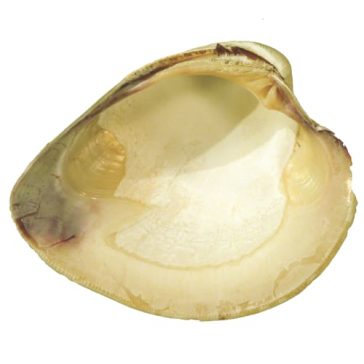When a foreign entity enters the body of an oyster—be it a grain of sand, a parasite, or some other material—the animal attacks the invader by encapsulating it in a crystalline substance. That encapsulated invader eventually becomes a pearl.
When Brendan Breen ’18 learned in his URI aquaculture class that the natural pearl production process can be induced by implanting a foreign object, he was inspired. He had known since his teenage years that he wanted to be an entrepreneur in the fishing industry, and that lesson in culturing pearls pointed him in the direction he sought.
He decided to become the first person to make pearls from quahogs, Rhode Island’s official state mollusks.
“Quahogs produce pearls naturally, but it’s a very rare process because they have a good means of expelling objects,” Breen says. “Only about a dozen wild quahog pearls of notable quality are found on the Eastern Seaboard each year.”

Since no one had ever tried to culture pearls from quahogs before, his first challenge was figuring out how to induce the shellfish to produce pearls without expelling the implanted foreign object. So he consulted with Professor Michael Rice and devised a plan. Breen then applied for a grant from the University, and during his junior year he began his work.
“I hit the books,” he says. “I spent every waking second studying pearl culture and the biology of mollusks. Then I had to be creative and come up with my own method of culturing pearls.”
After a semester of trial and error, and another semester of waiting for the quahogs to grow, he harvested some of his crop and found that most had produced pearls.
“I was pretty emotional that day,” Breen says. “I’m a dreamer, and I had put a lot into it. I was overjoyed to have created something so unique and beautiful that could bring joy to others.”
By the time he graduated last May, Breen had applied for a patent for his culturing process and started work on a business plan. His company, Mercenaria—Latin for quahog—now has hundreds of quahogs growing pearls in an undisclosed coastal location in southern New England. By late 2020, he’ll be ready to harvest his first commercial crop and market the pearls to jewelers and other prospective clients.
“I’ll be bringing something to the market the likes of which there hasn’t been before, so it’s already generating lots of excitement,” he said.
Todd McLeish
